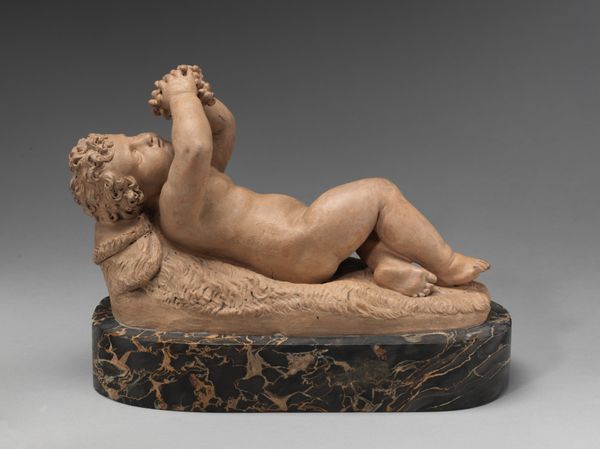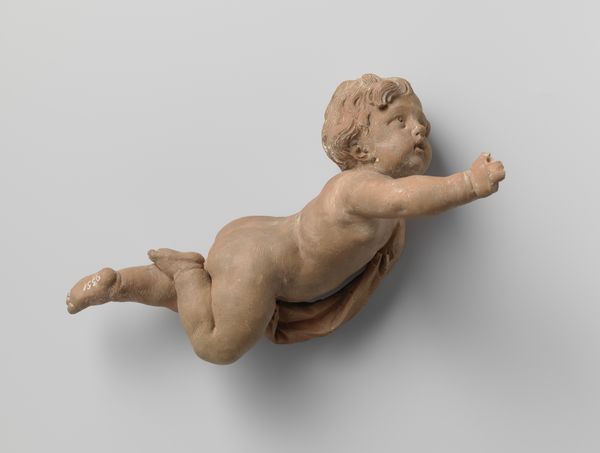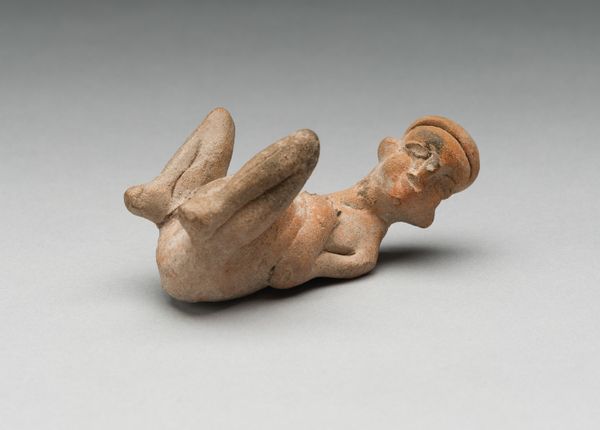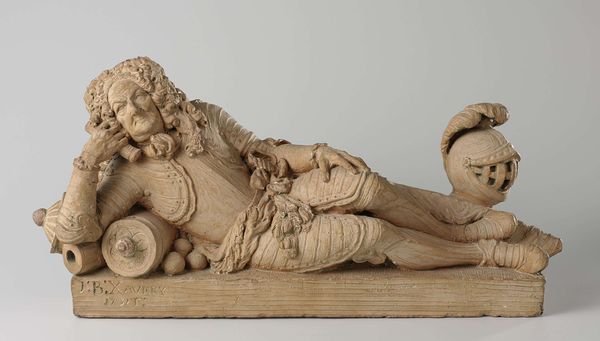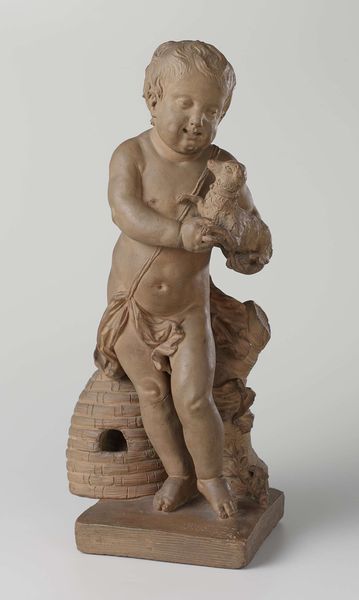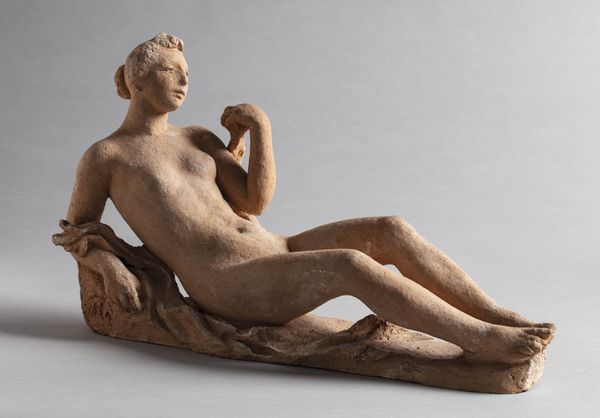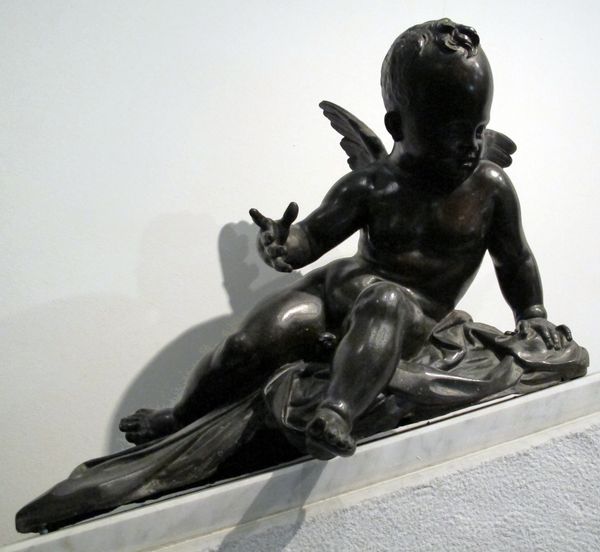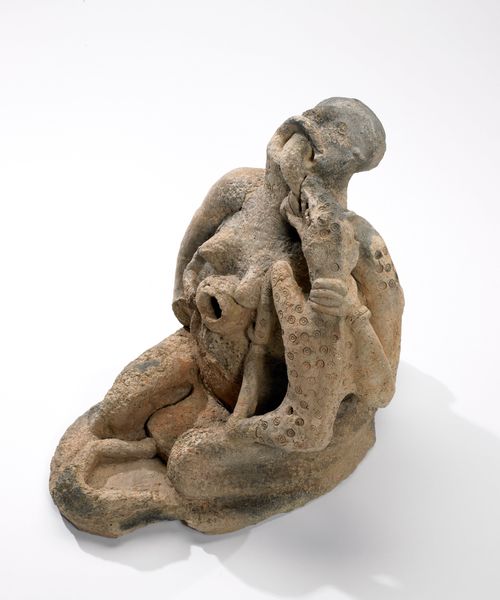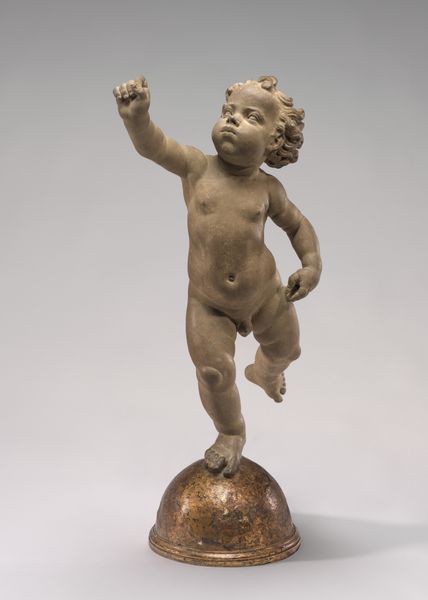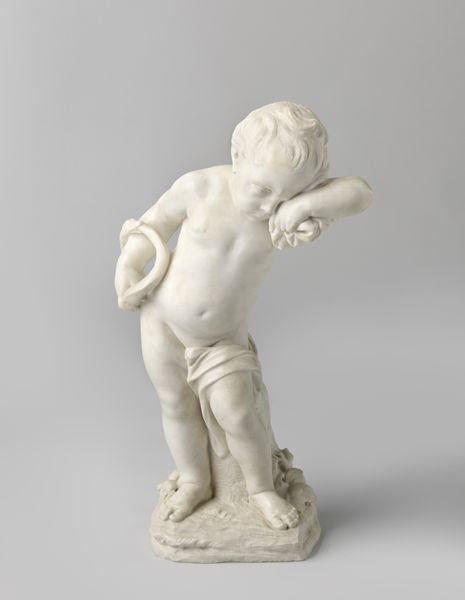
Naked Child Lying on His Back, Playing with His Foot 1893
0:00
0:00
sculpture, terracotta
#
portrait
#
sculpture
#
classical-realism
#
figuration
#
sculpture
#
terracotta
Dimensions: 9.6 cm (height) x 14.7 cm (width) x 7 cm (depth) (Netto)
Editor: This is "Naked Child Lying on His Back, Playing with His Foot," a terracotta sculpture made in 1893 by Georg Christian Freund. The sculpture has a charming simplicity. How do you interpret this work? Curator: Freund's work reminds us of the historical contexts framing childhood. The sentimental and idealized portrayal of the child, common in 19th-century art, often masked societal neglect and unequal opportunities. In many ways it reflects the intersectional challenges children experienced depending on their class and gender. Editor: So, this sculpture can be read not just as a representation of innocence, but also as a marker of social issues of the time? Curator: Precisely. Classical Realism often functioned as a conservative aesthetic. The depiction of childhood could, at times, downplay the real socio-economic hardships that children of different backgrounds had to face in the late 19th century. What assumptions does the viewer bring to this piece? Is it only seen as endearing and innocent, or does it provoke more complex questions? Editor: It's a good point; without knowing the background, it’s easy to see just the surface. What can we learn by comparing this with images of children from working class families in that same era? Curator: It gives the viewer an opportunity to acknowledge a more complicated reality for all. It provokes us to explore further questions of who gets to be represented and whose stories are deemed valuable, especially when concerning childhood experiences across diverse socio-economic backgrounds. Editor: I see that the intersection of social critique and artistic representation gives a richer perspective to the sculpture! Curator: Absolutely! Context allows us to explore the interplay between beauty, representation, and socio-political realities that may challenge simplistic or traditional understandings.
Comments
No comments
Be the first to comment and join the conversation on the ultimate creative platform.
